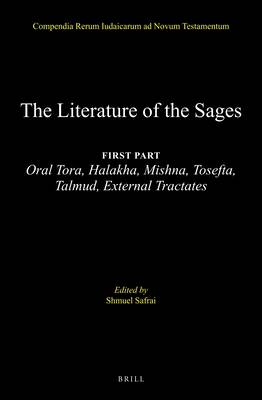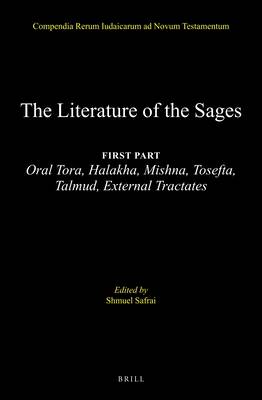
- Afhalen na 1 uur in een winkel met voorraad
- Gratis thuislevering in België vanaf € 30
- Ruim aanbod met 7 miljoen producten
- Afhalen na 1 uur in een winkel met voorraad
- Gratis thuislevering in België vanaf € 30
- Ruim aanbod met 7 miljoen producten
Zoeken
The Literature of the Jewish People in the Period of the Second Temple and the Talmud, Volume 3 the Literature of the Sages
First Part: Oral Tora, Halakha, Mishna, Tosefta, Talmud, External Tractates
Shmuel Safrai
€ 225,95
+ 451 punten
Omschrijving
The literary creation of the ancient Jewish teachers or Sages ‒ also called rabbinic literature ‒ consists of the teachings of thousands of Sages, many of them anonymous. For a long period, their teachings existed orally, which implied a great deal of flexibility in arrangement and form. Only gradually, as parts of the amorphous oral tradition became fixed, was the literature written down, a process that began in the third century CE and continued into the Middle Ages. Thus the documents of the rabbinic literature are the result of a remarkably long and complex process of creation and editing.
The volume here re-issued was a classic when published in 1987. It made lasting contributions through its careful and succinct analysis of specific natures of various documents, and their textual and literary forms. In its time it incorporated ground-breaking developments and it remains required reading for those who missed it the first time.
In the future CRINT plans to publish a revised and updated companion volume that is to reflect recent debate and a greater range of scholarly views, reference to developments in scholarship regarding Second Temple, Qumran and New Testament as well as to ancient Mesopotamian and Persian sources and archaeology. New methodologies from the Humanities and reference to digitation of source material will also be incorporated.
The volume here re-issued was a classic when published in 1987. It made lasting contributions through its careful and succinct analysis of specific natures of various documents, and their textual and literary forms. In its time it incorporated ground-breaking developments and it remains required reading for those who missed it the first time.
In the future CRINT plans to publish a revised and updated companion volume that is to reflect recent debate and a greater range of scholarly views, reference to developments in scholarship regarding Second Temple, Qumran and New Testament as well as to ancient Mesopotamian and Persian sources and archaeology. New methodologies from the Humanities and reference to digitation of source material will also be incorporated.
Specificaties
Betrokkenen
- Auteur(s):
- Uitgeverij:
Inhoud
- Aantal bladzijden:
- 492
- Taal:
- Engels
- Reeks:
- Reeksnummer:
- nr. 2
Eigenschappen
- Productcode (EAN):
- 9789004284470
- Verschijningsdatum:
- 1/01/1987
- Uitvoering:
- Hardcover
- Formaat:
- Genaaid
- Afmetingen:
- 163 mm x 241 mm
- Gewicht:
- 879 g

Alleen bij Standaard Boekhandel
+ 451 punten op je klantenkaart van Standaard Boekhandel
Beoordelingen
We publiceren alleen reviews die voldoen aan de voorwaarden voor reviews. Bekijk onze voorwaarden voor reviews.








